1.
Introduction
Convex analysis is a branch of mathematics that studies the properties of convex sets and convex functions. In convex analysis, a set is considered convex if for any two points in the set, the line segment connecting those two points is also contained within the set. Convex functions are functions where the line segment between any two points on the graph of the function is above the graph. Convex analysis is used in various fields such as optimization, economics, and engineering to model and solve problems related to optimization, fairness, and risk management. The main goal of convex analysis is to provide a tractable framework for the study of optimization problems where the objective and constraint functions are convex.
Definition 1.1. [1] A mapping ℏ:[a,b]→ℜ is called to be convex, if
where ϖ1,ϖ2∈[a,b] and χ∈[0,1].
The Hermite-Hadamard (H-H) inequality asserts that, if a mapping ℏ:I⊂ℜ→ℜ is convex in I for ϖ1,ϖ2∈I and ϖ2>ϖ1, then
Interested readers can refer to [1].
Both inequalities hold in the reversed direction if ℏ is concave. The inequality (1.2) is known in the literature as the Hermite-Hadamard's inequality.
We note that the Hermite-Hadamard's inequality may be regarded as a refinement of the concept of convexity and it follows easily from Jensen's inequality. The classical Hermite-Hadamard's inequality provides estimates of the mean value of a continuous convex function ℏ:[ϖ1,ϖ2]→ℜ. Many aesthetic inequalities on convex functions exist in the literature, among which Jensen's inequality has a special place. This inequality, which is proved under fairly simple conditions, is extensively used by researchers in fields such as information theory as well as in inequality theory. Jensen's inequality is presented as follows.
Let 0<ζ1≤ζ2≤...≤ζn and let ρ=(ρ1,ρ2,...,ρn) be non-negative weights such that ∑nj=1 ρj=1. The famous Jensen inequality (see [2]) in the literature states that if ℏ is convex functions on the interval [ϖ1,ϖ2], then
for all ζj∈[ϖ1,ϖ2], ρj∈[0,1]and(j=1,2,...,n).
It is one of the key inequality that helps to extract bounds for useful distances in information theory.
Although the studies on Jensen's inequality are a topic that many researchers have focused on, the variant put forward by Mercer is the most interesting and remarkable among them. In 2003, a new variant of Jensen's inequality was introduced by Mercer [3] as:
If ℏ is a convex function on [ϖ1,ϖ2], then
holds for all ζj∈[ϖ1,ϖ2], ρj∈[0,1]and(j=1,2,...,n).
Pe⌣carić et al. proposed several generalizations on Jensen-Mercer operator inequalities [4]. Later on, Niezgoda [5] have provided the several extensions to higher dimensions for Mercer's type inequalities. Recently, Jensen-Mercer's type inequality has made significant contribution on inequality theory ue to its prominent characterizations. Kian [6] contemplated the idea of Jensen inequality for superquadratic functions.
In [7], the idea of the Jensen-Mercer inequality has been used by Kian and Moslehian and the following Hermite-Hadamard-Mercer's inequality was demonstrated:
where ℏ is a convex function on [a,b]. For more recent studies linked to the Jensen-Mercer inequality, one can refer [8,9,10].
Although fractional analysis has a history that is as old as classical analysis historically, it has attracted more attention of researchers recently. Fractional analysis, with its use in real world problems, its contribution to engineering sciences, and its structure that is open to development and different dimensions that it brings to mathematical theories, is in a continuous effort to progress. The definition of fractional order derivatives and integrals and the contribution of each new operator to the field from a different direction is one aspect that keeps the fractional analysis up to date. When the new operators are examined carefully, various features such as singularity, locality and generalization and differences in the kernel structures stand out. Although generalization and inference are the cornerstones of mathematical methods, these different features in the new fractional operators add new features to problem solutions, especially the time memory effect. Accordingly, various operators such as Riemann-Liouville, Grünwald Letnikov, Raina, Katugampola, Prabhakar, Hilfer, Caputo-Fabirizio are some of the prominent operators that reveal this potential of fractional analysis. Now we will continue by introducing the Atangana-Baleanu integral operators, which have a special place among these operators.
Some researchers have become interested in the concept of a fractional derivative in recent years. There are two types of nonlocal fractional derivatives: those with singular kernels, such as the Riemann-Liouville and Caputo derivatives, and those with nonsingular kernels, such as the Caputo-Fabrizio and Atangana-Baleanu derivatives. Fractional derivative operators with non-singular kernels, on the other hand, are very effective at resolving non-locality in real-world problems. We'll go over the Caputo-Fabrizio integral operator later.
Definition 1.2. [11] Let ℏ∈H1(a,b), (where H1 is class of first order differentiable function) b>a, α∈[0,1], then the definition of the new Caputoifractional derivative is:
where M(α) is a normalizationifunction.
Moreover, theicorresponding Caputo-Fabrizioifractional integral operator is given as:
Definition 1.3. [12] Let ℏ∈H1(a,b), b>a, iα∈[0,1].
and
where M(α) is a normalizationifunction.
The Atangana-Baleanu derivative is a type of fractional derivative that was introduced in 2016 by Atangana and Baleanu. It is a generalization of the classical derivative, which extends the concept of differentiation to functions with non-integer order derivatives. The Atangana-Baleanu derivative is defined using the concept of the Caputo fractional derivative and provides a better approximation for real-world phenomena that exhibit memory and hereditary properties. This derivative has found applications in various fields such as physics, engineering, and biology, where it has been used to model problems involving anomalous diffusion, viscoelasticity, and electrochemistry, among others. The Atangana-Baleanu derivative has also been found to be more effective than other fractional derivatives in solving boundary value problems, particularly those with variable order derivatives. Atangana-Baleanu defined the derivative operator in both Caputo and Riemann-Liouville terms.
Definition 1.4. [13] Let ν>μ, α∈[0,1] and g∈H1(μ,ν). The new fractional derivative is given:
Definition 1.5. [13] Let g∈H1(a,b), μ>ν, α∈[0,1]. The new fractionaliderivative is given as
However, Atangana-Baleanu(AB)-fractional integral operator as follows.
Definition 1.6. [13] The fractional integral operator with non-local kernel of a function g∈H1(μ,ν) is defined by
where b>a,α∈[0,1].
The right hand side of the AB-fractional integral operator is
Here, Γ(α) is the Gamma function. The positivity of the normalization function M(α) implies that the fractional AB-integral of a positive function is positive. It is worth noticing that the case when the order α→1 yields the classical integral and the case when α→0 provides the initial function.
Furthermore, in recent years, several significant inequalities for interval-valued functions (H-H, Ostrowski, Simpson, and others) have been studied. In [14,15], to obtain Ostrowski type inequalities, Chalco-Cano et al. used the Hukuhara derivative for interval-valued functions. For more results, we can see the literature in [16,17,18,19].
2.
Calculus on interval and inequalities
This section contains notation for interva analysis as well as the background information. The space of all closed intervals of ℜ is denoted by Ic and Δ is a bounded element on Ic. As we have
where α_,ˉα∈ℜ and α_≤ˉα. L(Δ)=ˉα−α_ can be used to describe the length of the interval Δ=[α_,ˉα]. The endpoint of left and right of interval Δ are denoted by the numbers α_ and ˉα, respectively. The interval Δ is said to be degenerate where α_=ˉα and the form Δ=α=[α_,ˉα] is used. Also, if α_>0, we can say Δ is positive and if ˉα<0, we can say that Δ is negative. Since I+c and I−c denote the sets of all closed positive intervals and closed negative intervals of ℜ, respectively, the Pompeiu Hausdroff distance between the Δ and Λ is defined by
The set (Ic,PG) is a complete metric space. As far as we know (see [20]), the absolute vale of Δ is |Δ|, which is the maximum values of the end points:
The following are the concepts for fundamental interval arithmetic operations for the intervals Δ and Λ.
The scalar multiplication of the interval Δ is defined by
where γ∈ℜ. The interval Δ in an opposite form is
where γ=−1. In general, −Δ is not additive inverse for Δ, i.e., Δ−Δ≠0.
Definition 2.1. [21] For some kind of intervals Δ,Λ∈Ic, we denote the G-difference of Δ,Λ as the Ω∈Ic, we have
It appears beyond controversy that
where L(Δ)=ˉα−α_ and L(Λ)=ˉβ−β_. A large number of algebraic properties are produced by the operation definitions, allowing Ic to be a space of quasi-linear (see [22]).
The following are some of these characteristics (see [23,24,25]).
(1) (Law of associative under +) (Δ+Λ)+Θ=Δ+(Λ+Θ); for all Δ,Λ,Θ∈Ic.
(2) (Additive element) Δ+0=0+Δ=Δ; for all Δ∈Ic.
(3) (Law of commutative under +) Δ+Λ=Λ+Δ; for all Δ,Λ∈Ic.
(4) (Law of cancelation under +) Δ+Θ=Λ+Θ⇒Δ=Λ; for all Δ,Λ,Θ∈Ic.
(5) (Law of associative under ×) (Δ.Λ).Θ=Δ.(Λ.Θ); for all Δ,Λ,Θ∈Ic.
(6) (Law of commutative under ×) Δ.Λ=Λ.Δ; for all Δ,Λ∈Ic.
(7) (Multiplicative element) Δ.1=1.Δ=Δ; for all Δ∈Ic.
(8) (The first law of distributivity) λ(Δ+Λ)=λΔ+λΛ; for all Δ,Λ∈Ic,λ∈ℜ.
(9) (The second law of distributivity) (λ+γ)Δ=λΔ+γΔ; for all Δ∈Ic,for all λ,γ∈ℜ.
Apart from these features, the distributive law always applies to intervals. For example,
Δ=[1,2], Λ=[2,3] and Θ=[−2,−1]. We have
where
The inclusion of ⊆, is another distance feature, which is desired by
Moore defined the Riemann integral for functions with interval values in [24]. IR([ϖ1,ϖ2]) denotes the sets of Riemann-Liouville integrable interval-valued functions and R([ϖ1,ϖ2]) denotes the real-valued functions on [ϖ1,ϖ2], respectively. The following theorem establishes a connection between Riemann integrable (R)functions and (R)-integrable functions (see [26], pp. 131).
Theorem 2.1. A mapping of interval-valued ℏ:[ϖ1,ϖ2]→Ic with ℏ(χ)=[ℏ_(χ),ˉℏ(χ)]. The mapping ℏ∈IR([ϖ1,ϖ2] ⇔ ℏ_(χ),ˉℏ(χ)∈R([ϖ1,ϖ2] and
In [19,27], Zhao et al. defined the following convex interval-valued function.
Definition 2.2. For all x,υ∈[ϖ1,ϖ2] and v∈(0,1), a mapping ℏ:[ϖ1,ϖ2]→I+c is h-convex stated as
where h:[c,d]→ℜ is a nonnegative mapping with h≠0 and (0,1)⊆[c,d]. We shall show that the set of all h-convex interval-valued functions with SX(h,[ϖ1,ϖ2],I+c).
The standard definition of a convex interval-valued function is (2.4) with h(ν)=ν (see[28]). If h(ν)=νs in (2.4), then we get the definition of an s-convex interval-valued function (see [29]).
Zhao et al. used the h-convexity of interval-valued functions in [19] and obtained the following H-H inclusion:
Theorem 2.2. If SX(h,[ϖ1,ϖ2],I+c) and h(12)≠0, then we have
Remark 2.1. The inclusion 2.5 becomes the following if h(ϑ)=ϑ
which was discovered by Sadowska in [28].
The inclusion 2.5 becomes the following if h(ϑ)=ϑs
which was discovered by Osuna-Gómez et al. in [30].
Definition 2.3. [28] A mapping ℏ:[ϖ1,ϖ2]→Ic is said to be convex interval-valued, if for all x,v∈[ϖ1,ϖ2],ν∈(0,1), we have
Theorem 2.3. A mapping ℏ:[ϖ1,ϖ2]→Ic is said to be convex interval-valued, if and only if ℏ_ is a convex function on [ϖ1,ϖ2] and ˉℏ is a concave function on [ϖ1,ϖ2].
Theorem 2.4. (Jensen's Inclusion Interval Valued Function) [31] Let 0<ζ1≤ζ2≤...≤ζn and ℏ be a convex function on the interval-valued mapping on an interval containing ρk, then the following inclusion holds:
where ∑nj=1 ρj=1, ρj∈[0,1].
The inequality (2.9) is extended to convex interval-valued functions by the authors in [31] as follows.
Theorem 2.5. (Jensen-Mercer Inclusion Interval Valued Function) [31] Let ℏ be a convex function on the interval-valued mapping on [ϖ1,ϖ2] such that L(ϖ2)≥L(ϖo) for all ϖo∈[ϖ1,ϖ2], then the following inclusion
is true.
3.
Main results
In this section, we prove the Mercer's Hermite-Hadamard type inclusion for convex interval-valued functions via Atangana-Baleanu fractional integrals.
Theorem 3.1. Let α∈(0,1). Suppose that if ℏ:[ϖ1,ϖ2]→I+c is an interval valued convex function such that ℏ(χ)=[ℏ_(χ),ˉℏ(χ)] and L(ϖ2)≥L(ϖ0), ∀ϖ0∈[ϖ1,ϖ2], then the following inclusions for AB(Atangana-Baleanu) fractiona integral operator hold:
where M(α)>0 is a normalization function.
Proof. Since ℏ is an interval valued convex function, then for all u,v∈[ϖ1,ϖ2], we have
By Using
and
for all X,V∈[ϖ1,ϖ2] and χ∈[0,1], we get
Now, multiplying both sides of (3.4) by αM(α)Γ(α)χα−1 and integrating by inclusion with respect to χ over [0,1], we obtain
and the proof of the first inclusion in (3.1) is completed. To prove that the second inclusion in (3.1), first we note that ℏ is an interval-valued convex function, so we have
and
Adding (3.7) and (3.8), we obtain the following from Jensen-Mercer inclusion.
Now, multiplying both sides of (3.9) by αM(α)Γ(α)χα−1 and integrating by inclusion with respect to χ over [0,1], we obtain
Concatenating the Eqs (3.6) and (3.10), we can get (3.1).
Corollary 3.1. By the same assumptions as defined in Theorem 3.1 with ℏ_(χ)=ˉℏ(χ), we have
Theorem 3.2. Let α∈(0,1). Suppose that if ℏ:[ϖ1,ϖ2]→I+c is an interval valued convex function such that ℏ(χ)=[ℏ_(χ),ˉℏ(χ)] and L(ϖ2)≥L(ϖ0), ∀ϖ0∈[ϖ1,ϖ2], then the following inclusions for the AB (Atangana-Baleanu) fractional integral operator hold:
where M(α)>0 is a normalization function.
Proof. Since ℏ is an interval valued convex function, we have for all u,v∈[ϖ1,ϖ2],
By Using
and
for all X,V∈[ϖ1,ϖ2] and χ∈[0,1], we get
Now, multiplying both sides of above by αM(α)Γ(α)χα−1 and integrating by inclusion with respect to χ over [0,1], we obtain
and the proof of the first inclusion (3.12) is completed. To prove the second inclusion in (3.12), first we note that ℏ is an interval-valued convex function, we have
and
Adding above equations, we get
Multiplying both sides of above by αM(α)Γ(α)χα−1 and integrating by inclusion with respect to χ over [0,1], we obtain
Concatenating the Eqs (3.15) and (3.20), we can get (3.12). This ends the proof.
Corollary 3.2. By the same assumptions as defined in Theorem 3.2 with ℏ_(χ)=ˉℏ(χ), we have
Remark 3.1. If α=1 in Corollary 3.2, then it reduces to Kian and Moslehian in Theorem 2.1 [6].
Corollary 3.3. By the same assumptions as defined in Theorem 3.2 with X=ϖ1 and V=ϖ2, we have
Theorem 3.3. Suppose that if ℏ:[ϖ1,ϖ2]→I+c is an interval valued convex function suchithat ℏ(χ)=[ℏ_(χ),ˉℏ(χ)] and L(ϖ2)≥L(ϖ0), ∀ϖ0∈[ϖ1,ϖ2], then the following inclusions for AB(Atangana-Baleanu) fractional integral operator hold:
Proof. Since ℏ is an interval valued convex function, we have for all u,v∈[ϖ1,ϖ2],
and
for all X,V∈[ϖ1,ϖ2] and χ∈[0,1], we get
Now, multiplying both sides of above by αM(α)Γ(α)χα−1 and integrating by inclusion with respect to χ over [0,1], we obtain
The proof of the first inclusion in (3.28) is completed. To prove that the second inclusion (3.28) from Jensen-Mercer inclusion, we have
and
Adding above equations, we get
Multiplying both sides of (3.31) by αM(α)Γ(α)χα−1 and integrating by inclusion with respect to χ over [0,1], we obtain
Concatenating the Eqs (3.28) and (3.32), we can get (3.23). This ends the proof.
Corollary 3.4. By the same assumptions as defined in Theorem 3.3 with ℏ_(χ)=ˉℏ(χ), we have
Corollary 3.5. By the same assumptions as defined in Theorem 3.3 with X=ϖ1 and V=ϖ2, we have
4.
Applications to matrix
We denote by Cn the set of n×n complex matrices, Mn the algebra of n×n complex matrices, and by M+n the strictly positive matrices in Mn. That is, A∈M+n if ⟨Ax,x⟩>0 for all nonzero x∈Cn. In [32], Sababheh proved that the function ψ(θ)=||AθYB1−θ+A1−θYBθ||,A,B ∈M+n Y∈Mn, is convex for all θ∈[0,1].
Example 4.1. By using Theorem 3.1 with satisfies the conditions in Theorem 3.1, we have
Example 4.2. Under the same assumptions of above example, if we consider Theorem 3.2, we have
Example 4.3. Under the same assumptions of above example, if we consider Theorem 3.3, we have
5.
Conclusions
The use of Atangana-Baleanu fractional integrals allowed us to demonstrate Hermite-Hadamard-Mercer inclusions for convex interval-valued functions. It is a fascinating and original problem where prospective scholars can discover related inequality for different convexities and fractional integrals. It would be intriguing to apply these findings to other convexities. In this exciting area of disparities and analysis, we anticipate that much study will centre on our recently revealed approach. It is possible to broaden and develop the amazing techniques and wonderful ideas in this text to coordinates and fractional integrals. This is how we intend to carry out our research in the long run.
Data availability
The data used to support the findings of this study are available from the corresponding author upon request.
Authors' Contributions
All authors contribute equally in this paper.
Conflict of interest
The authors declare that they have no conflict of interest.
Acknowledgments
The authors would like to thank the Deanship of Scientific Research at Umm Al-Qura University for supporting this work grant code: 22UQU4331214DSR01.
Funding
This paper does not receive any external funding.











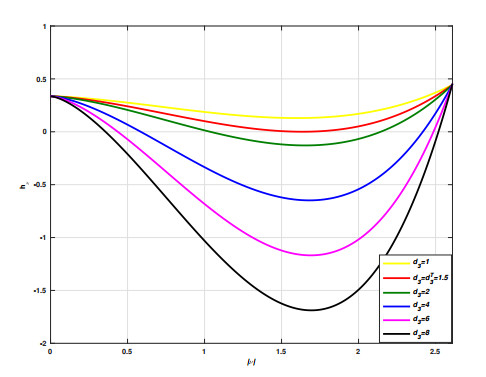
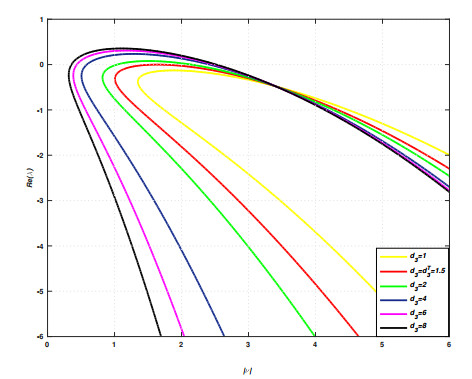
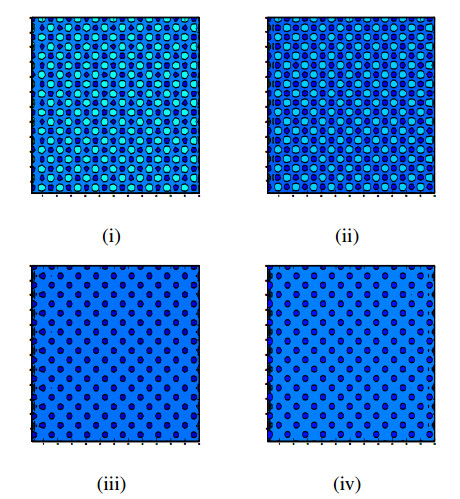
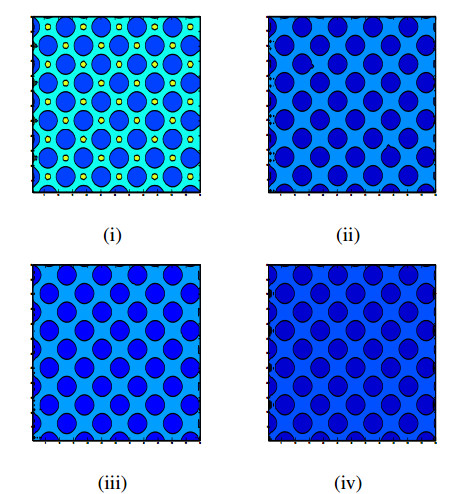

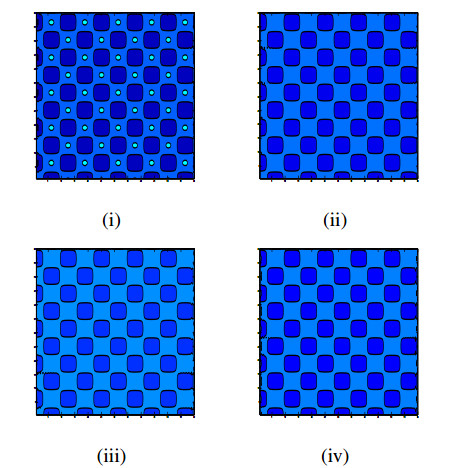



 DownLoad:
DownLoad: